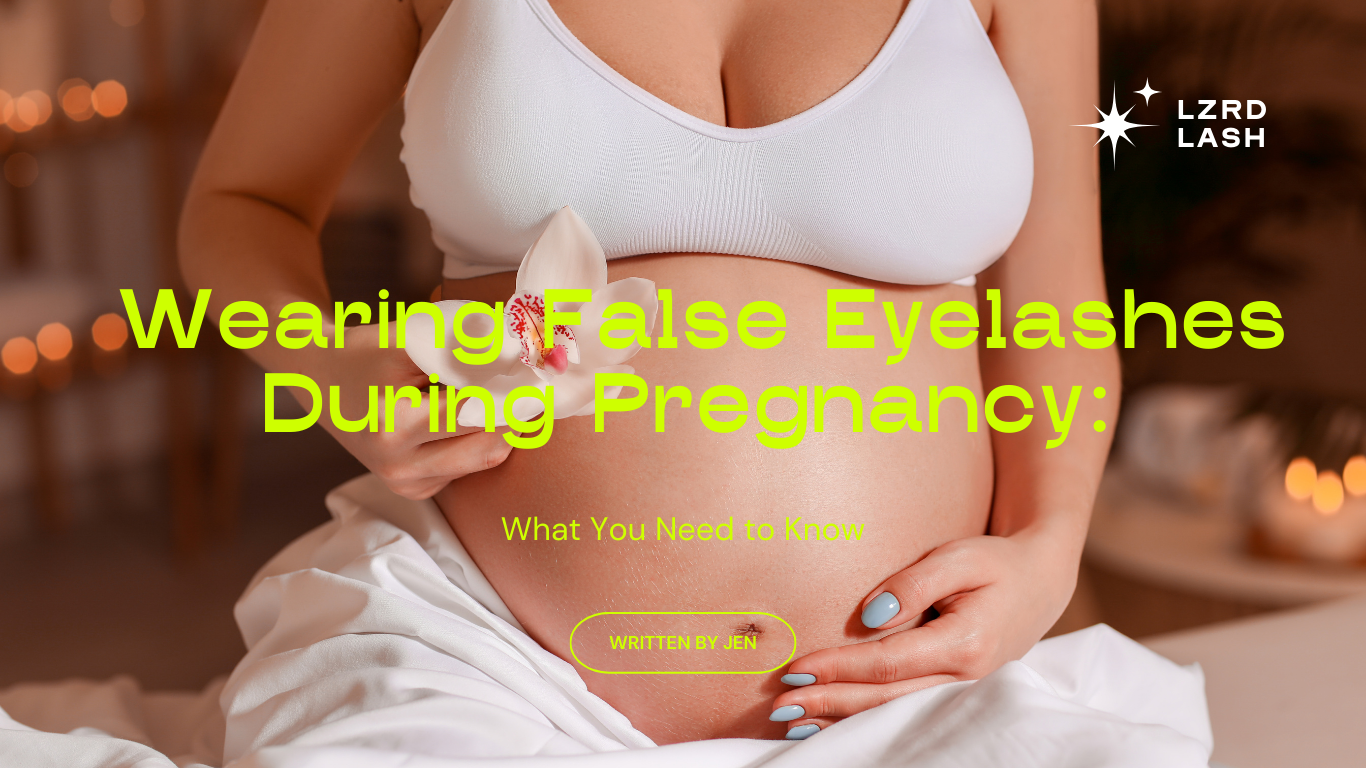
Wearing False Eyelashes During Pregnancy: What You Need to Know.
Pregnant? Safe false eyelash use is key. Choose safe glues, apply/remove carefully to prevent irritation. Know what to pick for pregnancy-safe lashes.
Changes During Pregnancy
Pregnancy brings about a myriad of physical and hormonal changes that can profoundly impact a woman's appearance and self-esteem. As the body undergoes transformations to nurture the growing fetus, various aspects of a woman's appearance may shift, leaving some feeling less confident or self-assured.
Hormonal fluctuations during pregnancy can lead to changes in skin texture, complexion, and hair growth patterns. Many women experience an increase in oil production, which can result in acne breakouts or a "pregnancy glow." Additionally, hormonal changes can cause hair to become thicker or more lush during pregnancy, only to experience excessive shedding after giving birth.
The physical changes associated with pregnancy are often the most visible and can significantly impact a woman's self-image. As the belly expands to accommodate the growing baby, stretch marks may appear, and the body's shape may change dramatically. Swelling in the feet, ankles, and hands is also common, which can make some women feel self-conscious about their appearance.
It's important to remember that these changes are natural and temporary, and that every woman's experience is unique. While some may embrace their changing appearance with confidence, others may struggle with feelings of insecurity or a desire to maintain their pre-pregnancy look. Understanding and accepting these changes can be a journey, and seeking support from loved ones or healthcare professionals can be invaluable.
Safety Concerns During Pregnancy
Allergic Reactions: Hormonal changes during pregnancy can increase skin sensitivity, making expectant mothers more prone to allergic reactions caused by chemicals in eyelash adhesives. These reactions can lead to redness, itching, swelling, and discomfort around the eye area. Risk of Eye Infections: Improper hygiene practices during the application of false eyelashes can introduce bacteria or microorganisms, potentially leading to eye infections such as conjunctivitis or styes. Close contact with the eye area requires extra caution to minimize the risk of infection. Eye Irritation and Discomfort: The adhesives used to secure false eyelashes can cause stinging, burning, or a foreign body sensation in the eyes. Additionally, the weight and presence of false lashes may feel uncomfortable, especially for those unaccustomed to wearing them. Pregnancy-related hormonal changes can exacerbate eye sensitivity.
Ingredients to Avoid in Eyelash Adhesives
Formaldehyde: Often used as a preservative, formaldehyde can irritate the eyes, nose, and throat. Exposure during pregnancy has been linked to increased risks of miscarriage, low birth weight, and developmental delays.
Toluene: Found in adhesives and nail polish, toluene is a solvent that can be absorbed through the skin. It has been associated with developmental problems in fetuses, including low birth weight and central nervous system dysfunction.
Phthalates: These endocrine-disrupting compounds, commonly present in cosmetic products, including eyelash adhesives, have been linked to reproductive and developmental issues, raising concerns during pregnancy.
Latex: Individuals with latex sensitivity should avoid eyelash adhesives containing latex, as exposure during pregnancy has been associated with an increased risk of preterm birth and low birth weight.
Tips for Applying False Eyelashes During Pregnancy:
If you choose to wear false eyelashes during pregnancy, it's crucial to follow proper application and removal techniques to minimise potential risks. Here are some best practices to keep in mind:
Cleanliness and Hygiene
- Always start with a clean face, free of makeup residue or oils.
- Wash your hands thoroughly with soap and water before handling the false lashes.
- Disinfect the lash applicator and tweezers with rubbing alcohol or an appropriate disinfectant.
- Avoid sharing false lashes or applicators with others to prevent the spread of bacteria or infections. Safe Application
- Read and follow the manufacturer's instructions carefully.
- Use a safe, hypoallergenic lash adhesive specifically designed for false eyelash application.
- Apply the adhesive in a thin, even layer along the lash band, avoiding excessive amounts.
- Wait for the adhesive to become slightly tacky before applying the lashes to your lash line.
- Gently press the lash band into place, ensuring it adheres securely without gaps. Removal and Aftercare
- Remove false lashes gently, using a lash remover or oil-based makeup remover.
- Avoid tugging or pulling on the lashes, as this can cause damage to your natural lashes.
- Clean and disinfect the false lashes after each use if you plan to reuse them.
- Discard false lashes that show signs of wear, damage, or excessive buildup.
Monitoring for Reactions
Be vigilant for any signs of irritation, redness, or discomfort around the eye area.
If you experience any adverse reactions, remove the false lashes immediately and consult your healthcare provider.
Consider discontinuing the use of false lashes if you experience persistent issues or discomfort. Remember, your safety and the well-being of your baby should be the top priority during pregnancy. If you have any concerns or doubts, it's always best to consult with your healthcare provider for personalised advice.
Consulting Your Healthcare Provider
Every pregnancy is unique, and it's vital to consult your healthcare provider or obstetrician for personalised advice. They can offer specific guidance based on your individual health, any potential concerns, and take into account any allergies or sensitivities you may have. Your healthcare provider knows your medical history best and can provide you with the most accurate information.
Conclusion
Wearing false lashes during pregnancy is generally considered safe, provided you take certain precautions. Opt for hypoallergenic lashes, choose lash glues that are formaldehyde-free and latex-free, conduct a patch test before using a new product, and apply lashes with care. Remember, your health and comfort are paramount, so consult your healthcare provider for personalised advice. With the right choices and careful application, you can enjoy beautiful lashes while embracing the joy of pregnancy.
